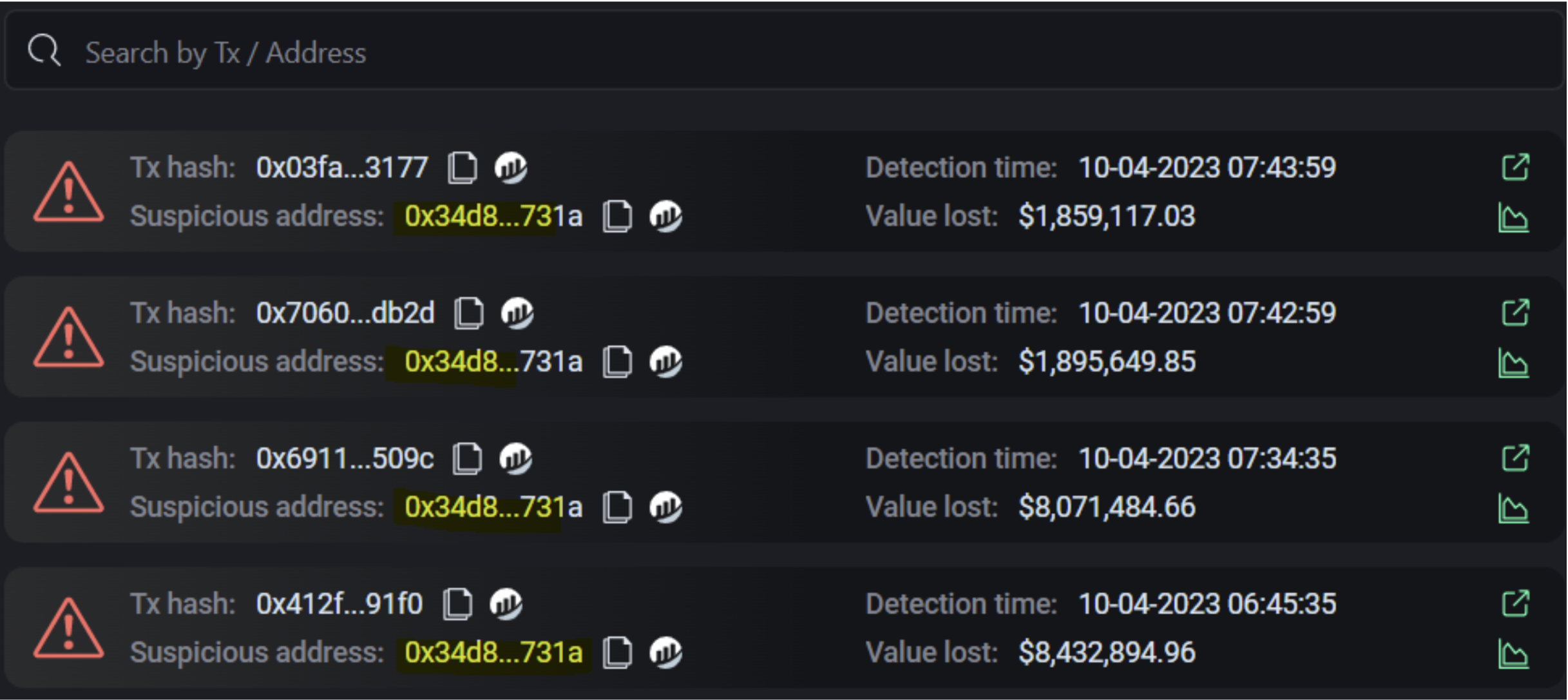Products

In a previous article, we discussed the recent Bitrue exchange hack that lost approximately $23 million worth of cryptocurrency. As the need for reliable security measures to protect against hacks has never been greater, Cyvers' advanced machine learning algorithms played a crucial role in detecting suspicious activity and preventing further exploits. This article will delve deeper into how our unique machine-learning approach detected the Bitrue hack and why it represents a significant step forward in blockchain security.
Cyvers leverages advanced feature engineering and machine learning algorithms for both supervised and unsupervised learning to detect anomalies in the blockchain ecosystem. Our algorithms can easily distinguish between normal and abnormal behavior through behavioral analysis, significantly reducing the false positive rate. In the Bitrue case, our machine learning algorithms detected the hacker's transactions with no false positive rate, allowing us to alert Bitrue promptly.
By detecting hack transactions with a high degree of accuracy, our machine learning algorithms enhance the overall trust in blockchain technology and crypto in general, which could lead to greater adoption and innovation. The potential impact of our algorithms extends beyond the prevention of individual hacks and contributes to a more secure and resilient blockchain ecosystem.
As the sophistication and frequency of hacking attempts continue to increase, it is clear that traditional security measures alone are not enough to keep exchanges secure. Our machine-learning algorithm represents a new approach to this problem that has the potential to make a real difference in preventing future hacks.
One of the key strengths of Cyver’s ML algorithm is that it is able to update itself with new data whenever there is a new incident of a hack. By updating itself with new data, our algorithm can adapt to evolving hacking activity patterns and improve its accuracy in detecting hack transactions over time. This feature also means that our algorithm is able to stay ahead of emerging threats in the rapidly evolving landscape of blockchain security.
Overall, the ability of our ML model to update itself with new data whenever there is a new incident is a significant advantage over more traditional, static security measures. By combining advanced feature engineering, behavioral analysis, and continuous improvement through collecting new data and examples, our algorithms can stay ahead of emerging threats and protect the integrity of blockchain networks.
In the case of the Bitrue hack, Cyvers' advanced machine learning algorithms played a crucial role in detecting the exploit and alerting the exchange. As previously reported, our platform detected suspicious activity on Bitrue's Ethereum address, observing a significant drop in the exchange's balance. By notifying Bitrue of the potential breach, our algorithms enabled the exchange to address the issue quickly and prevent further exploitation of funds.
Here is the first transaction of the Bitrue hacker:
https://etherscan.io/tx/0x412f9e572415b666f08559c86be81aee6dc9ee4b7a313ea70371bc14703291f0
This transaction can be seen as an alert on the Cyvers system, showing that the system did indeed find and alert about the hacker's activity in real time.

Our analysis involves collecting data from various sources, including public blockchain data, to train and test our ML algorithm. In the case of Bitrue, we used a range of statistical and machine-learning techniques to analyze the data, including feature engineering, model selection, and hyperparameter tuning. Our analysis identified key features highly predictive of hack transactions, including unusual transaction patterns and atypical wallet behavior.
This showcases the ability for the cyvers system to detect a high percentage of hack transactions with a low false positive rate, indicating its potential as a reliable security measure for blockchain applications and crypto exchanges.
The Bitrue hack highlights the critical role that advanced machine learning algorithms, like ours, can play in detecting and preventing security breaches in the blockchain ecosystem. It’s not only the Web3 protocols that are at risk of hacks and exploits but also exchanges and custodians. Cyvers is committed to staying at the forefront of security in the crypto space, providing the necessary solutions to safeguard the ecosystem and prevent hackers from stealing funds and breaking havoc in the space.
Identify patterns and anomalies across blockchains in real-time for proactive mitigation.
Book a Demo